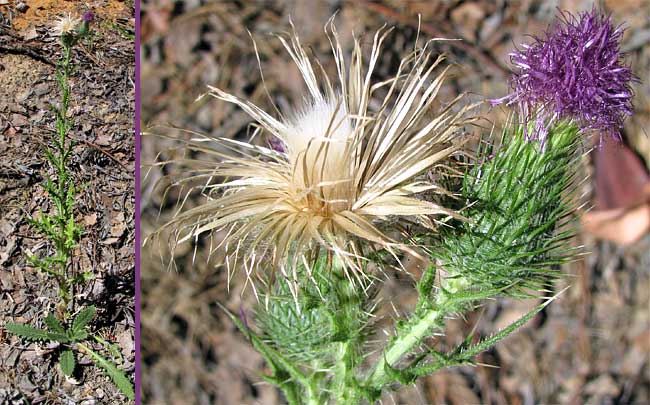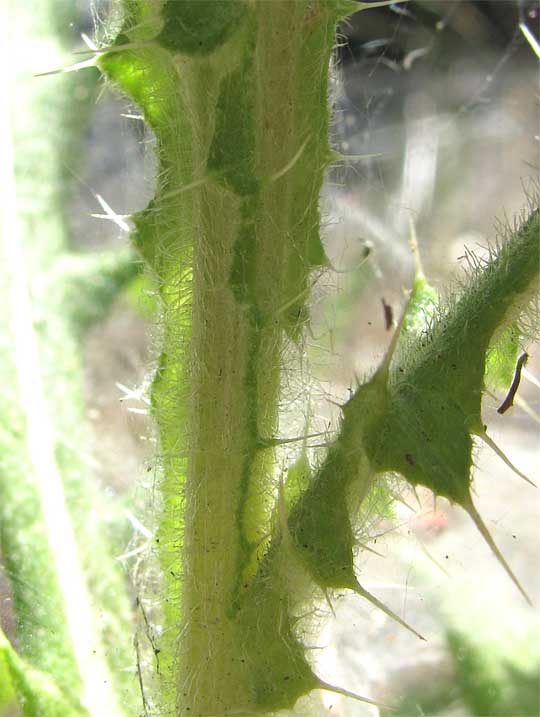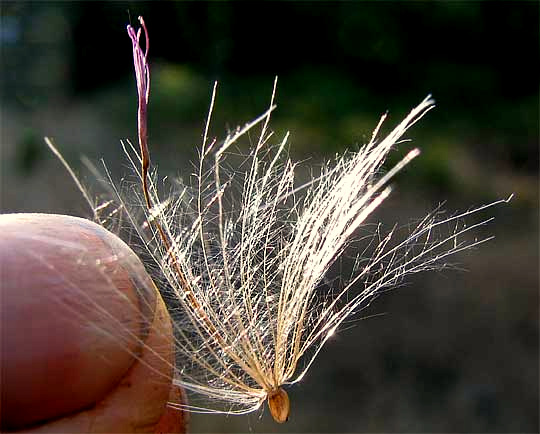Excerpts from Jim Conrad's
Naturalist Newsletter

from the the September 6, 2009 Newsletter, issued from the Siskiyou Mountains west of Grants Pass, Oregon:
THISTILES EVERYWHERE
Even on seldom used trails deep in the mountains you run into Bull Thistles, CIRSIUM VULGARE, beside the road. Usually there's just one plant. They've been flowering for weeks so now mostly their heads are white with parachuted seeds occasionally abandoning themselves singly or in groups into the wind. You can see a plant with both a fruiting and a flowering head above.
At the base of the plant at the left in the photo there's a small rosette of spiny leaves. Bull Thistles are biennials -- living two years -- who produce a rosette the first year, then on the second year a stem arises from the rosette. Therefore the inset actually shows two plants, a tall, second-year one and a first- year one in its rosette stage.
The Flora of North America describes 62 thistle species in the genus Cirsium, plus spiny plants in other genera also are referred to as thistles. An important field mark for Bull Thistles is shown below:

There you see that the hairy stem is "winged" -- bears narrow vertical ridges of green tissue extending from the bases of leaves down the stem. The wing on the stem's left is evident because of how light passes through its thin tissue.
Windborne thistle seeds are parachuted with feathery branched hair -- thistledown -- as you can see below:

Notice that the spent purple corolla still is attached to the "seed" (actually an achene-fruit), its slender tube rising above the hairs.
Bull thistles are native to Europe, western Asia, and northern Africa. They are thought to have been introduced into the eastern US during colonial times and into the West during the late 1800s. Currently it's found in all 50 states and it's not liked at all by livestock people because of the damage it can do to a grazing animal's mouth.